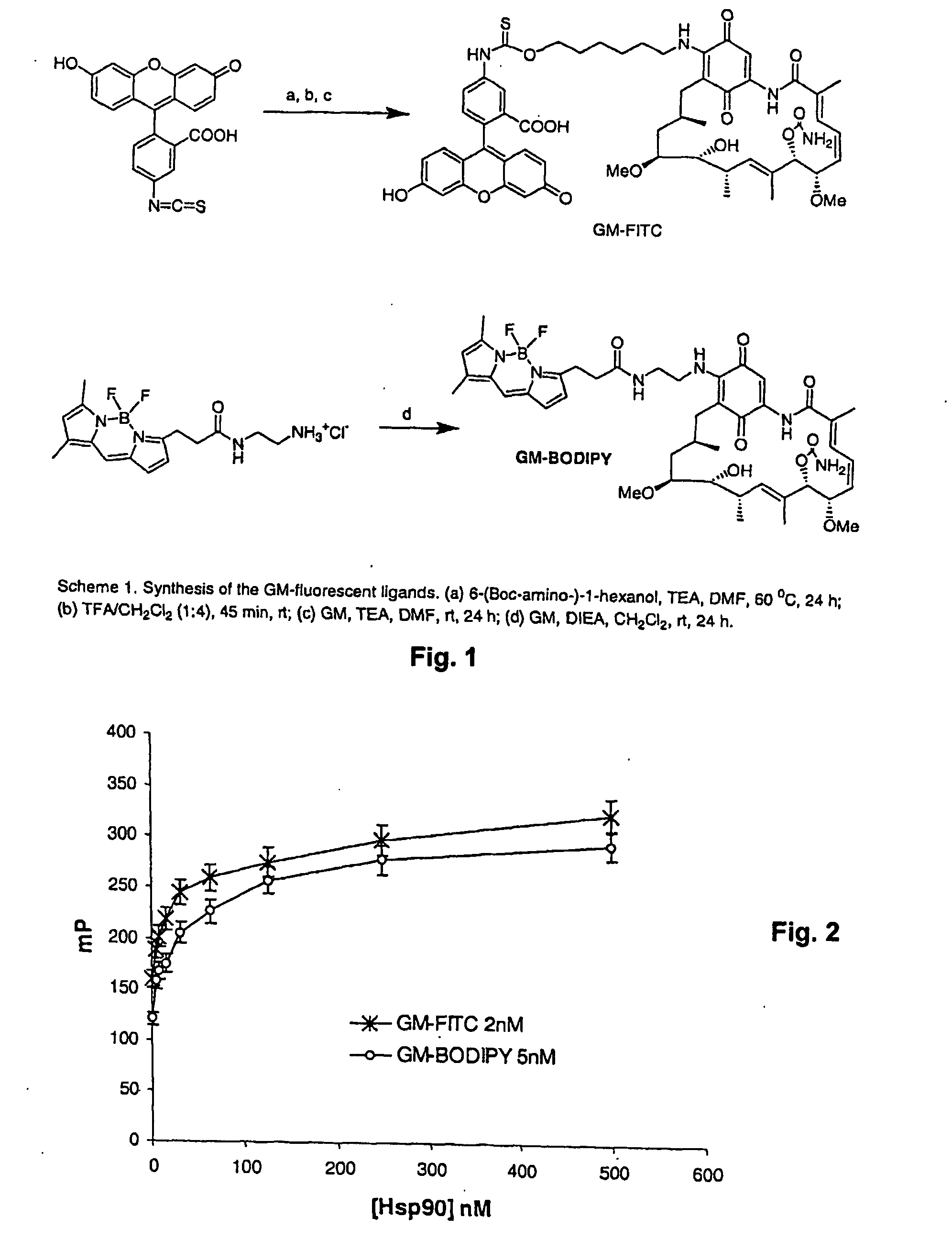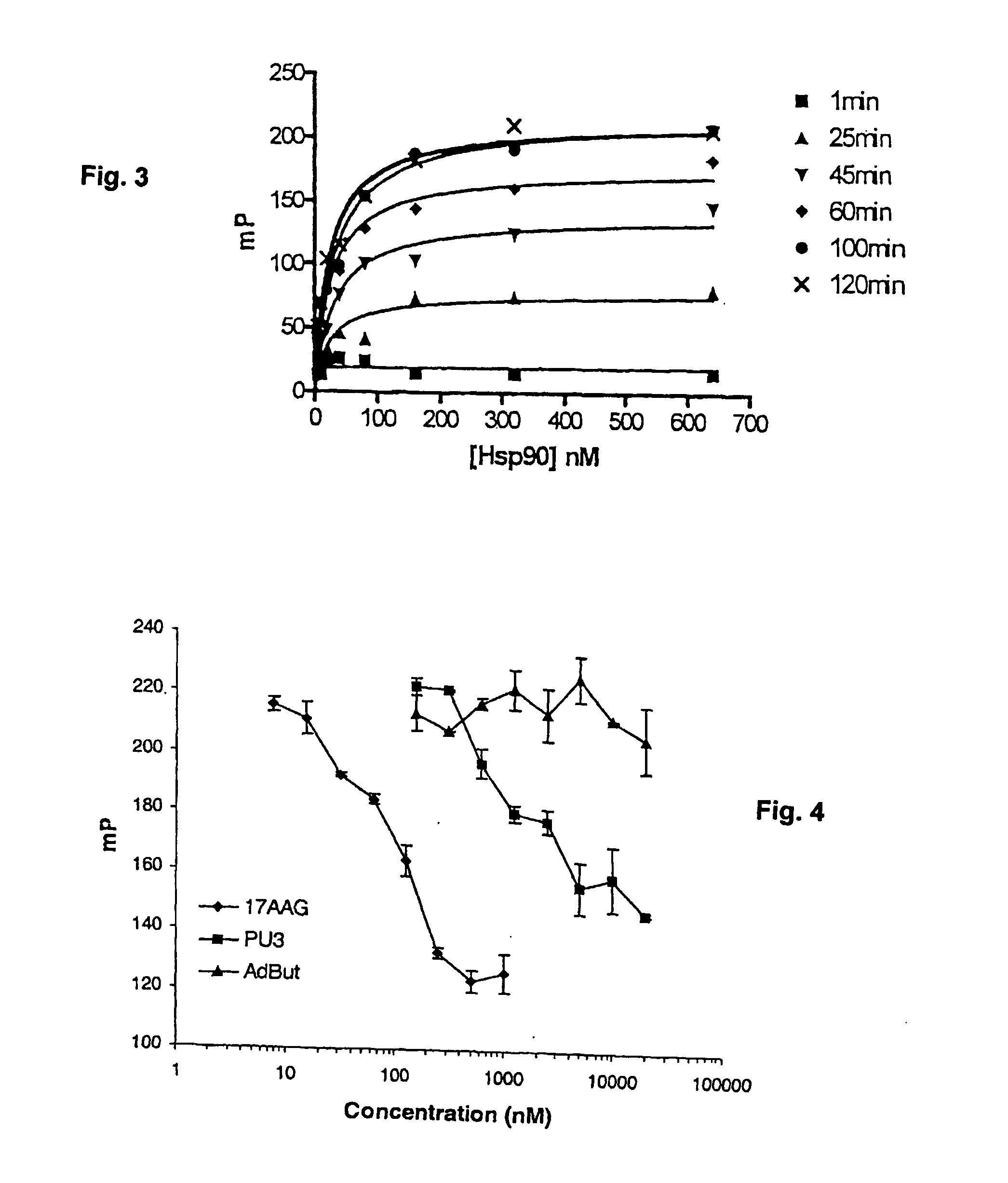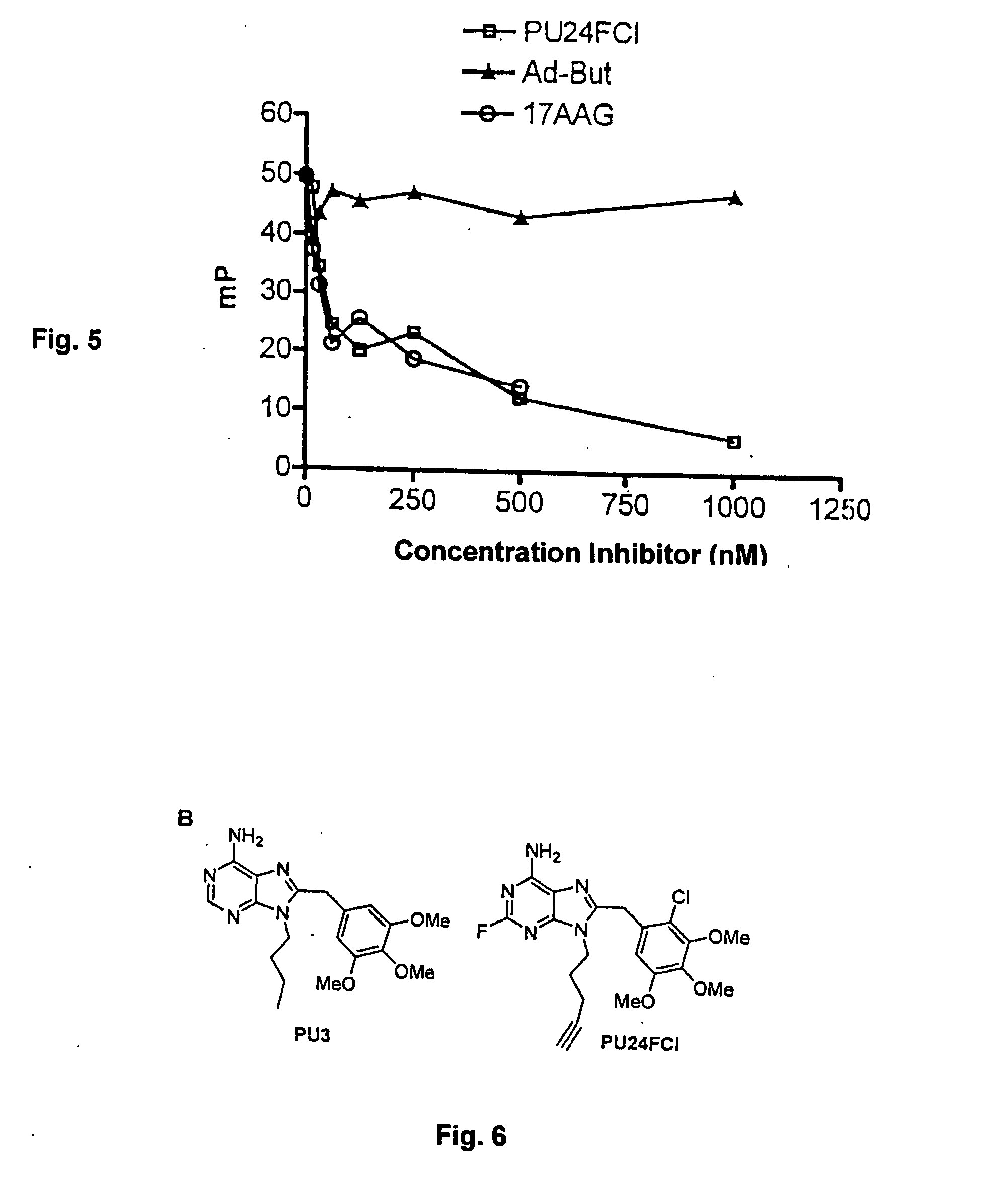Assays for detection of bioactive compounds that interact with heat shock protein 90
a technology of heat shock protein and assay protocol, which is applied in the field of assay protocol for the identification of bioactive compounds, can solve the problems of affecting the rapid the inability of hts to assess the binding of ligands to hsp90, and the inability to quickly and high-throughput screening of compound libraries, so as to reduce the cost and high atpase activity
- Summary
- Abstract
- Description
- Claims
- Application Information
AI Technical Summary
Benefits of technology
Problems solved by technology
Method used
Image
Examples
example 1
Synthesis of Fluorescent-Labeled Geldanamycin
[0089] The sole known chemical modification in the skeleton of GM allowing for activity is at C17 (Schnur et al. “Inhibition of the Oncogene Product p185erbB-2 in Vitro and in Vivo by Geldanamycin and Dihydrogeldanamycin Derivatives”, J. Med. Chem. 1995, 38, 3806-3812; Schnur et al. “erbB-2 Oncogene Inhibition by Geldanamycin Derivatives: Synthesis, Mechanism of Action, and Structure-Activity Relationships”, J. Med. Chem. 1996, 38, 3813-3820.). The methoxy group found at this position easily undergoes a Michael reaction when in the presence of primary amines. Two fluorescent dyes primarily used in FP assays, FITC and BODIPY, were chosen to be linked to GM. The commercially available fluorescein-5-isothiocyanate was reacted with 6-(Boc-amino)-1-hexanol by heating in DMF in the presence of triethylamine (TEA) as base to afford the corresponding thiocarbamate in 50% yield. Deprotection of Boc using trifluoroacetic acid (TFA) in CH2Cl2 occur...
example 2
Fluorescence Polarization of GM-FITC and GM-BODIPY
[0092] To assess the suitability of these probes for Hsp90 in a homogenous FP assay format using an Analyst AD (Molecular Devices) instrument, a stock of 10 M of each tracer was prepared in DMSO and diluted with HFB buffer (20 mM HEPES (K) pH 7.3, 50 mM KCl, 1 mM DTT, 5 mM MgCl2, 20 mM Na2MoO4, 0.01% NP40 with 0.1 mg / mL BGG) to obtain 10 nM and 4 nM solutions for GM-BODIPY and GM-FITC, respectively. Different amounts of Hsp90 alpha (Stressgen # SPP776) dissolved in HBF were added to a low binding black 96 well-plate (Corning # 3650) in a 50 L volume. To each well were added 50 L of the tracer solution. Some wells were left with buffer or tracer alone to serve as controls. The plate was left on a shaker at 4° C. for 3 h and the FP values in mP were recorded. The measured FP value (mP) was plotted against the protein concentration (FIG. 2). Both tracers performed well in the assay. The titration curve showed that the probes bind tight...
example 3
Competitive Displacement of GM-BODIPY by Hsp90 Inhibitors
[0094] Competitive displacement studies were performed with known Hsp90 inhibitors 17AAG and PU3 (structure shown in FIG. 6) and additionally as a control, with Ad-But, a PU3 derivative that does not bind Hsp90 (Schulte, et al. “The benzoquinone ansamycin 17-allylamino-17-demethoxygeldanamycin binds to Hsp90 and shares important biologic activities with geldanamycin.” Cancer Chemother. Pharmacol., 42: 273-279, 1998; Chiosis, et al., “A small molecule designed to bind to the adenine nucleotide pocket of Hsp90 causes Her2 degradation and the growth arrest and differentiation of breast cancer cells.” Chem. Biol., 8: 289-299, 2001). Stocks of these molecules were made in DMSO at concentrations of 200 M for 17AAG and 4 mM for PU3 and Ad-But. The drugs were serially diluted in binding buffer and the GM-BODIPY tracer and Hsp90 were added at 5 nM and 40 nM concentrations, respectively. Maximum concentration of used DMSO was 0.25% (v / ...
PUM
| Property | Measurement | Unit |
|---|---|---|
| Structure | aaaaa | aaaaa |
| Heat | aaaaa | aaaaa |
| Fluorescence | aaaaa | aaaaa |
Abstract
Description
Claims
Application Information
 Login to View More
Login to View More - R&D
- Intellectual Property
- Life Sciences
- Materials
- Tech Scout
- Unparalleled Data Quality
- Higher Quality Content
- 60% Fewer Hallucinations
Browse by: Latest US Patents, China's latest patents, Technical Efficacy Thesaurus, Application Domain, Technology Topic, Popular Technical Reports.
© 2025 PatSnap. All rights reserved.Legal|Privacy policy|Modern Slavery Act Transparency Statement|Sitemap|About US| Contact US: help@patsnap.com



